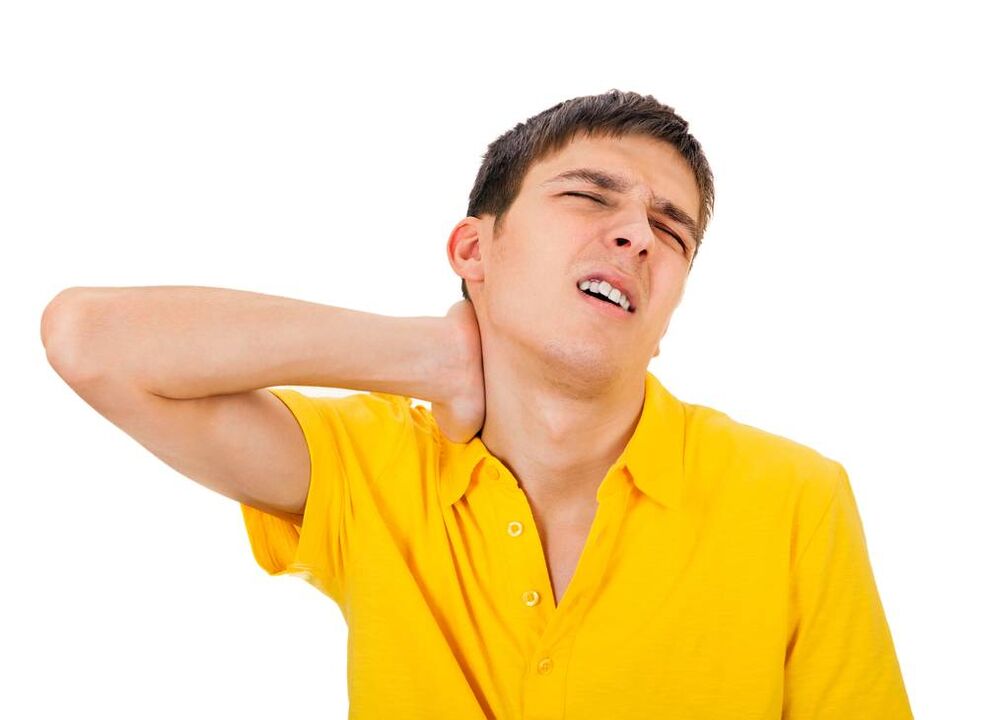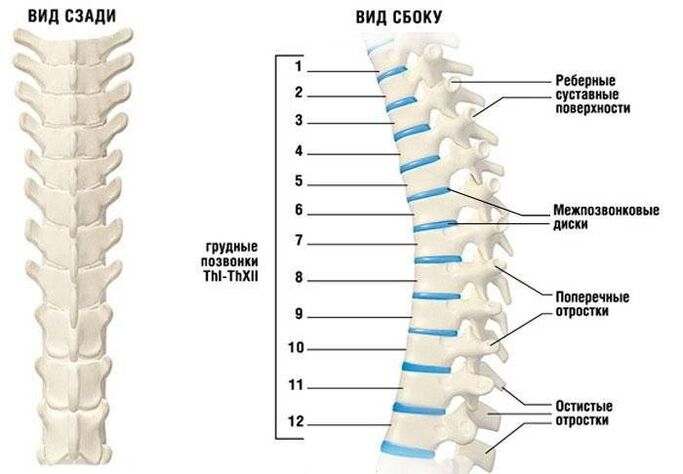Currently, according to medical statistics, almost all people over 25-30 years old complain about the symptoms of cervical osteochondrosis.The disease affects this spine more often than others.Pathology is a progressive degenerative process that affects intervertebral discs and beads located in the neck.The disease is common in men and women alike.It is a dangerous and complex form of osteochondrosis, as large blood vessels supplying the brain and a large number of nerve endings are located in the neck.Violations of intrigue and blood flow lead to a deterioration in the brain in oxygen and nutrients.

Signs of the disease
Symptoms of cervical spine osteochondrosis are more pronounced than in other parts of the spinal column, even with minor damage.This is due to the fact that the beads are located near each other, and the intervertebral discs have a small height.Such an anatomical feature contributes to the fact that with osteochondrosis, nerve endings, spinal cord, blood vessels are more often compressed.
General symptoms:
- Pain syndrome;
- weakness and decreased sensitivity to upper extremities;
- restriction of neck mobility;
- violations of coordination of movements;
- frequent dizziness;
- general weakness;
- Deterioration of the functioning of the organs of perception (hearing, vision, touch, taste).
The pains are most often located in the neck, give the back of the head, shoulders, arms.The upper limbs hurt if the nervous spine is tight from the damaged vertebra, which is responsible for their intrigue.Pain in the back of the head is due to spastic contractions of the neck muscles attached to the occipital bones, and a violation of blood circulation in the area.
Hand weakness is observed in patients if the nerve spine is involved in the pathological process that ensures the intrigue of the upper limb muscles.Restoration of mobility and a characteristic crisis when the neck is rotated or steep if bone growth occurs in the cervical vertebrae, the height of the intervertebral discs decreases, affects the joints located between the vertebrae.
The vertebrae in the neck has transverse processes that form a channel in which the brain -feeding artery goes.With osteochondrosis of the cervical spine, the vertebrae is displaced, the connective tissue is growing on them.This leads to the compression of the cervical artery, a deterioration in the blood supply of the brain and the back of the brain.As a result, a person has frequent dizziness, coordination of movements, overall weakness is disturbed.In advanced cases, if the artery is involved in the pathological process or pushed firmly, then the blood supply of the brain, the occipital part and the brain deteriorate significantly.In this case, the functionality of the hearing and vision organs, the numbness of the tongue and the fingers decreases.
Signs of the disease depend on which of the eight vertebrae is affected by a dystrophic or inflammatory process.Disordisms of sensitivity and movement lead to damage to the cerebrospinal roots in which several beads affect.Depending on this, the following manifestations of cervical osteochondrosis are observed:

- The first vertebra - the neck and occipital part of the head are numb, their sensitivity decreases;
- The second - the pain in the crown and the nap is felt;
- Third - pain is felt and sensitivity decreases in that part of the neck where the spine is squeezed, the intensity of the sensations of taste decreases, and speech damage is present;
- Fourth pain radiates to the shoulder, scapula, the patient is worried about cardiac pain, respiratory disorders and neck muscle tone decreases;
- The fifth pain is observed in the neck, given on the outer surface of the shoulder;
- The sixth pain in the neck radiates to the shoulder blade, felt on the forearm and the finger;
- Seventh - the pain is given to the shoulder blade, the back of the shoulder, forearm and fingers (from second to fourth);
- Eight - the pain spread from the neck to the shoulders, forearms and little finger.
Depending on the spread of the lesion, four degrees of osteochondrosis of the cervical spine vary.This is not the stage of the disease, but the severity of the symptoms, because of how common the pathological process is, what vertebrae affects.
- In the first degree, clinical symptoms are missing or manifested minimally.Patients complain of mild pain, intensifying during head movements.The treatment started at this stage of the disease will be effective.However, people often ignore worrying symptoms or do not feel them, so they are not consulted with a doctor.
- The deterioration of the pathological process increases the symptoms.In the second phase, the pain becomes more pronounced, give the upper limbs, shoulder blades.At this stage in the development of the degenerative process, the height of the intervertebral disc decreases, as a result of which the nerve fiber is attached.This becomes the cause of increased pain.The second rate of osteochondrosis of the cervical region is characterized by the appearance of headaches, a deterioration in well -being, a decrease in working capacity.
- The third degree of cervical osteochondrosis is distinguished by the formation of an intervertebral affected disk hernia.Neck mobility is limited, with palpation the patient feels severe pain.With this spread of the pathological process, the pain becomes constant, which radiates to the upper limbs.The muscle tension attached to the occipital bones is felt.Patients complain of frequent dizziness, general weakness, numbness of the hands.
- The fourth degree of cervical osteochondrosis is diagnosed when the intervertebral disc is completely destroyed by a dystrophic process.It is replaced by fibrous tissue, which leads to a considerable restriction of mobility.Spinal cord and blood vessels flying in the neck are affected.Such changes are characterized by a significant deterioration in the blood supply of the brain and the occipital of the brain.Oxygen hunger leads to violations of coordination of movements, hearing damage, vision, tongue, speech disorders.
Treatment methods
Looking for a doctor in time when the first alarming symptoms appear, unpleasant neck sensations, the reaction from the nervous system will prevent the progress of degenerative changes.The treatment of cervical osteochondrosis consists of a complex of therapeutic masses.Among them:
- taking medication;
- massage;
- Physical education of physiotherapy;
- Physiotherapeutic procedures.
Drug therapy
Doctors prescribe anti -inflammatory drugs to reduce the intensity of the pain, reduce the inflammatory process and swelling of the nerve spine.The chondroprotectors reset the damaged cartilage tissue to the intervertebral disc.Musorexants relax the neck muscles, relieve spasm.Medications to improve blood flow help to resume damaged blood supply to the brain.B vitamins activate metabolism in nerve tissue.With severe pain, the doctor may prescribe analgesic medicines.If the patient has a pronounced pain syndrome, then analgesics are parenterally introduced after the pain is descended, they pass into tablets.
Physiotherapeutic methods
Physiotherapy is an effective way to combat osteochondrosis of the cervical region.It is necessary to treat this disease using such techniques, following which the following results are achieved:
- The intensity of the pain decreases;
- Resetting the affected bone, cartilage and muscle tissue activated;
- Spasms and muscle tension are removed;
- An inflammatory process has stopped;
- Delivery of oxygen and nutrients to the affected area and the brain improves.
The most effective in the treatment of osteochondrosis are the following types of procedures:
- Drug electrophoresis (the affected area acts with electrical concussion, which, in addition to activating blood flow and tissue restoration, improves the distribution of the drug's action substance in the tissue affected by the degenerative process);
- Ultrasound therapy (metabolic processes in the diseased area are activated, the pain decreases, inflammation is stopped);
- Magnetotherapy (facilitates swelling from the affected area, which helps reduce pain intensity);
- Laser therapy (improves blood circulation in the pathological process, has an anti -inflammatory effect).
Physical education
Exercises are described during the period when acute manifestations of the disease are prohibited.During gymnastics it should not feel discomfort and pain.The complex must be performed after reaching a continuous apology to prevent relapse.

- Take a lying position in the stomach, raise your head and body, relying on your hands.The back is straight, the breath is deep and even.Linger in a position for a minute or two, then slowly get the starting position.The number of repetitions is 3.
- The position is lying on the stomach, hands along the body.Slowly turn your head, trying to touch your ear on the floor.Repeat 6 times on each side.
- Sitting or standing, glue your head to an inhalation, trying to reach your chin on your chest.In extraction, get the head back, raising your eyes to the ceiling.The number of repetitions is 10-15.
- A good exercise to strengthen the cervical muscles is to press the forehead against the hands pressed towards it.To achieve the effect, you need to press the palms on the forehead and forehead on the palm of your hand for 30 seconds.Repeat three times.
- Rotate your head in a circle.Do the exercise slowly, without problems.In each direction - 10 revolutions each.The appearance of dizziness during movements is unacceptable.If this happens, you should stop immediately.
Massage
The course is prescribed by a doctor during the lack of acute pain, only a specialist with a medical education can perform it.With such a disease, it is not recommended to contact non -professionals.
Therapeutic effects of collar area massage:
- Blood flow and lymph in the affected area improves;
- Muscles relax, spasm is removed;
- The intensity of the pain decreases.
Surgical intervention
The operation is indicated if conservative therapy does not produce results within six months, the patient is tortured by severe pain, signs of nerve fiber damage and myelopathy are observed.If the osteochondrosis of the cervical region continues with complications, there is a threat of a stroke, there is a strong spinal cushion, then surgery is needed.
According to indications, they use the following types of surgical interventions:
- Endoscopic dysoctoma - removing part or an entire intervertebral disc;
- Laminotomy - extraction of bone ligaments and overloaded particles of bone tissue (often combined with laminoplastic - the creation of artificial plaques to expand the spinal canal);
- Laser evaporation of the disk nucleus - demolition of the intervertebral disc nucleus with a laser beam simultaneously with the destruction of its destroyed fragments;
- Cold -nucleoplastic plasma -instead of an endoscope, a long and thin hollow needle is used, which is inserted into the intervertebral disc, an electrode that has a cold inserted effect is delivered through it at the site of destruction.
The neck is a complex organ in which large blood vessels pass, spinal parties.They are easy to damage, so they use surgeries in no more than 5% of cases.Surgical treatment is often associated with the development of complications.Among them:
- inflammatory process in the tissue or membrane of the spinal cord;
- osteomyelitis;
- The formation of wounds leading to the narrowing of the arterial and spinal canals.
Operations on the cervical spine are complex and require a long period of rehabilitation.Patient resetting after surgery requires a term of six months or more.
PREVENTION
To prevent the development of cervical osteochondrosis, it is necessary:
- Monitor the position of the spine and neck;
- Run an active lifestyle, move more;
- When doing physical exercises, it is necessary to be careful, to observe the correctness of the execution, as even minor injuries can affect the condition of the muscular system;
- Take care of the correct position of the body during sleep, buy an orthopedic or anatomical mattress;
- Equip correctly a job where a person spends a lot of time;
- to be regularly included in physical culture;
- Monitor the diet, ensure the intake of all the useful minerals needed for the bone castle, especially magnesium and calcium;
- Are constantly undergoing distribution examinations for timely detection of osteochondrosis.
Prevention will help prevent degenerative changes in the cervical spine, protects against pain, dizziness, numbness of the limbs and other unpleasant symptoms.

















































